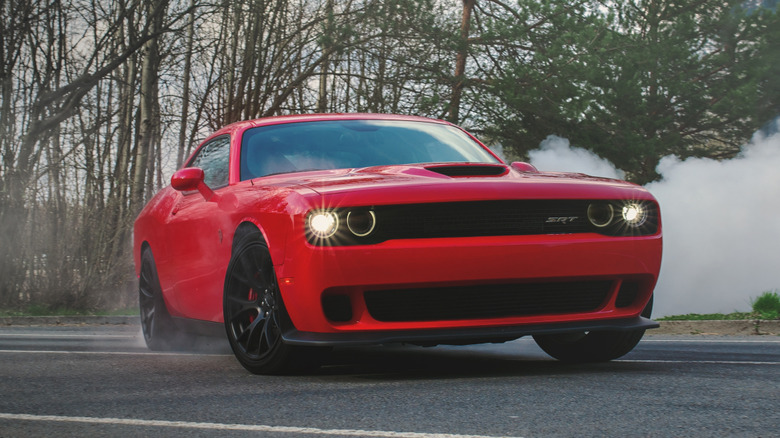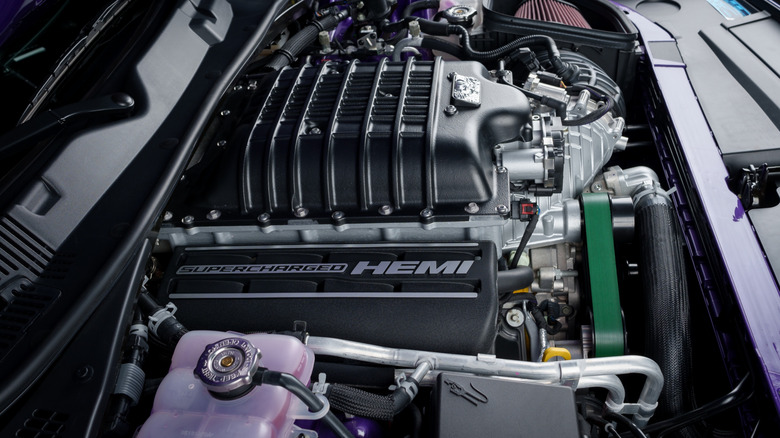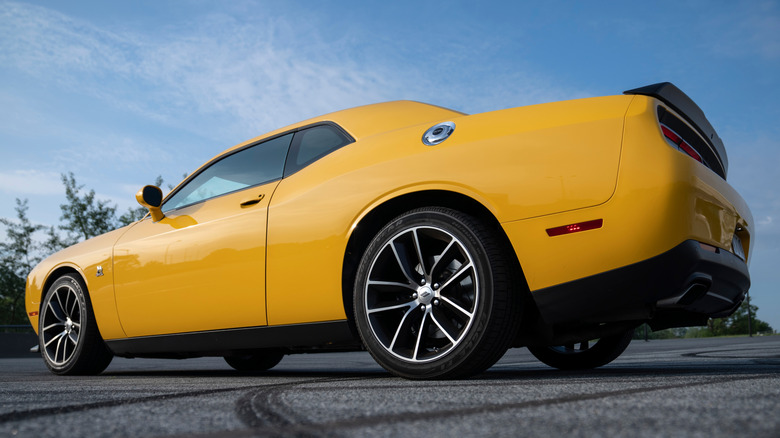Much of the Dodge’s modern success can be attributed to thundering Hemi V8s under the hood of the Challenger, Charger, and other models. Likewise, much of the reason for its floundering sales today is due to the decision of former Stellantis CEO Carlos Tavares to kill the Hemi V8 alongside the muscle cars it powered that defined the brand’s identity.
The cars that launched this surge of success have some surprisingly old underpinnings. The LX platform these cars rode on was based on a 1990s Mercedes-Benz E-Class, although it was thoroughly updated over time. Similarly, Hemi V8s are old-fashioned pushrod engines, not modern dual overhead cam (DOHC) designs like the Ford Coyote 5.0 that powers the Mustang GT.
In hindsight, it’s clear that these were strong choices for Dodge and its muscle car lineup. Still, the question remains — why did Dodge stick with pushrod V8s, a design which the company first introduced in the Firepower V8 way back in 1951? The answer comes down to several factors that made this design popular in the original muscle car era and remain just as relevant today as they were back then.
Torque is king
For a muscle car to sell, it has to drive one. That means providing gobs of tire-smoking torque rather than putting all the eggs into the horsepower basket.
Since horsepower is the result of torque multiplied by engine speed, a small, low-torque engine like the Honda S2000 can still produce significant horsepower numbers by revving to almost 9,000 RPM. The alternative is to favor the other side of the equation by keeping the RPMs down and maximizing torque. This is where the pushrod V8 shines. While its design prevents it from achieving high RPMs, a big V8 can still move a lot of air just because of its large size.
Another factor that is a disadvantage for horsepower but an advantage for torque is that the Hemi V8 only has two valves per cylinder, not four like most DOHC engines. This limits airflow and horsepower at high RPMs, but since a pushrod V8 can’t do high RPMs anyway, that’s not an issue. Instead, this restriction increases the speed of air flowing into the cylinders. This causes the air and fuel to mix more effectively, combust more efficiently, and produce more torque.
Of course, just because it’s a little harder to make big horsepower from a pushrod Hemi V8 doesn’t mean it can’t be done.
Packaging and cost
While muscle car torque was a big reason for keeping the pushrod V8, there were other factors as well. For starters, it’s a relatively simple design with a single camshaft that drives the entire valvetrain, rather than four in a DOHC V8. That also eliminates several gears and timing belts or chains. The single timing chain is quite short, since the camshaft is right next to the crankshaft. This design also means that upgrading to a hotter cam involves replacing one camshaft instead of four, which is both easier and less expensive.
Eliminating the extra complexity of a DOHC V8 also reduces the engine’s weight. It makes the engine smaller as well – particularly the heads. They only need to contain the pushrods, rockers, and valves instead of the entire valvetrain, camshafts and all, like a DOHC engine. This makes the engine easier to fit under the hood, both in the vehicles they’re intended for as well as other cars that they may (almost) fit into, such as this audacious Hellcat Miata.
The final benefit of the pushrod V8 is its cost, as it is simply less expensive to build than a DOHC V8. If this can save the manufacturer even a few hundred bucks per engine, it adds up to a substantial savings across hundreds of thousands of cars and Ram trucks over several years of production. The Dodge Hemi V8 might be gone, but it’s certainly not forgotten. In fact, the Hemi V8 may not even be gone after all – we hope that’s true.




